Hello again everyone! I am excited for today’s article, where you will find out, if you can you grow lettuce in containers, and how!
Growing lettuce in containers is one of the simplest ways to add fresh, home-grown greens to the meals. Lettuce is forgiving, fast-growing, and doesn’t take up a lot of space, making it ideal for container gardening.
Whether you have a small balcony or just a sunny windowsill, you can grow crisp, delicious lettuce with just a few easy steps. Let’s talk about what I’ve experimented with different methods over the years and have gathered tips that work well.
Table of Contents
Why Grow Lettuce in a Container?
Growing lettuce in containers has many benefits. First, it’s space-efficient, which is ideal for those of us who may not have a large yard or live in flats. Containers can be moved around for better sunlight or to protect plants from harsh weather.
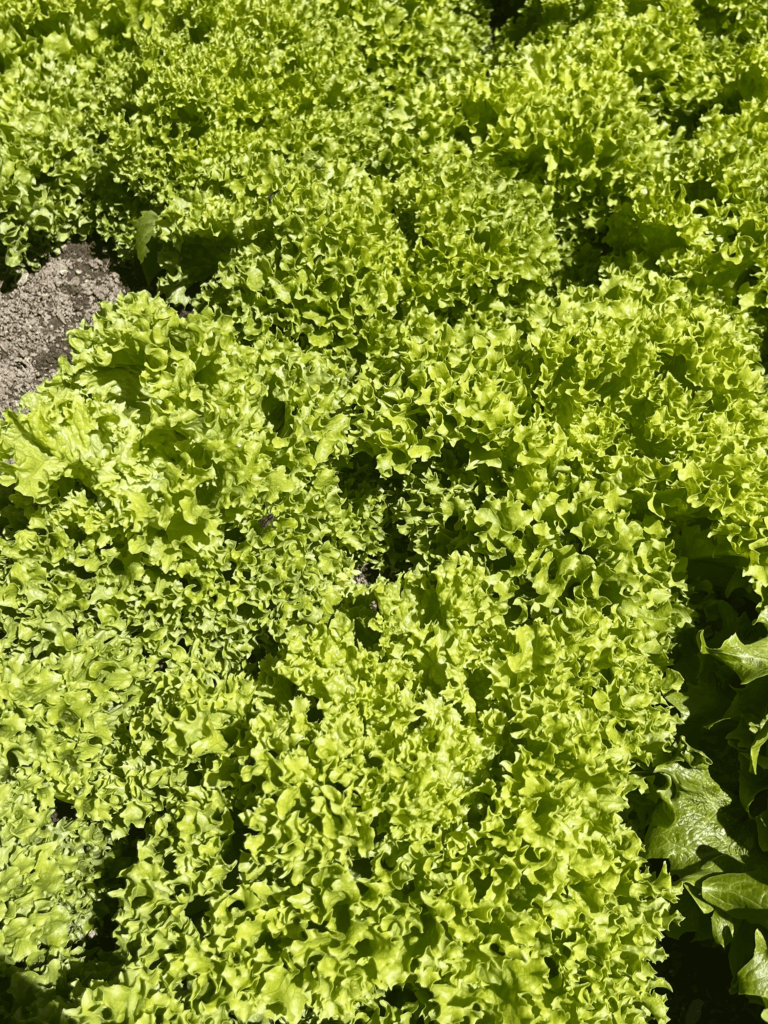
And, you have more control over the soil, drainage, and pest management. It’s an easy way to start gardening, and it’s rewarding to have a quick harvest in just a few weeks.
Let’s share the details of how to get started and what you need to know to enjoy fresh lettuce all season long.
How to Choose the Best Lettuce for Your Container Garden
With so many options, it’s easy to find a lettuce variety that fits your taste and gardening style. Trying a mix of types can also give you a beautiful, tasty blend to enjoy all season long! When choosing your lettuce varieties, keep these tips in mind:
- Climate Compatibility
Some lettuces, like romaine and Batavia, handle heat better. If you live in a warmer area, these types are often less prone to bolting (going to seed).
Iceberg and butterhead varieties typically do best in cooler weather.
2. Space Considerations
For container gardens, smaller or loose-leaf types like butterhead, leaf, and mini romaine varieties like ‘Little Gem’ are ideal.
They don’t need as much room and are easy to harvest.
3. Harvest Preferences
If you like harvesting often, try leaf lettuces or mini romaine types that let you pick leaves as needed.
For larger heads, opt for varieties like iceberg or romaine that you can harvest once the heads form fully.
Choosing the Right Lettuce Variety
Lettuce comes in a variety of types from iceberg, butterhead, looseleaf, mesclun to romaine. Different types of lettuce have a unique taste, and each brings its texture and growth habits.
If you like lettuce on sandwiches, I recommend trying growing loose-leaf or butterhead – they’re tasty and have sturdy leaves. Iceberg is one of my favorites it is crunchy and great for salads like Caeser, but it can fall apart a bit on a burger.
Mesclun (or baby lettuce mixes) is a colourful mixed lettuce that is a delicious garnish for different kinds of dishes.
- Loose-Leaf Lettuce
Loose-leaf lettuce grows in loose, leafy heads, making it perfect for containers. It grows quickly, and you can harvest individual leaves as needed. The varieties of seeds I like and often use are “Black-Seeded Simpson” an early, heat-tolerant variety with light green, crinkly leaves, “Salad Bowl”, and “Red Sails” with soft, ruffled leaves and a sweet flavour.
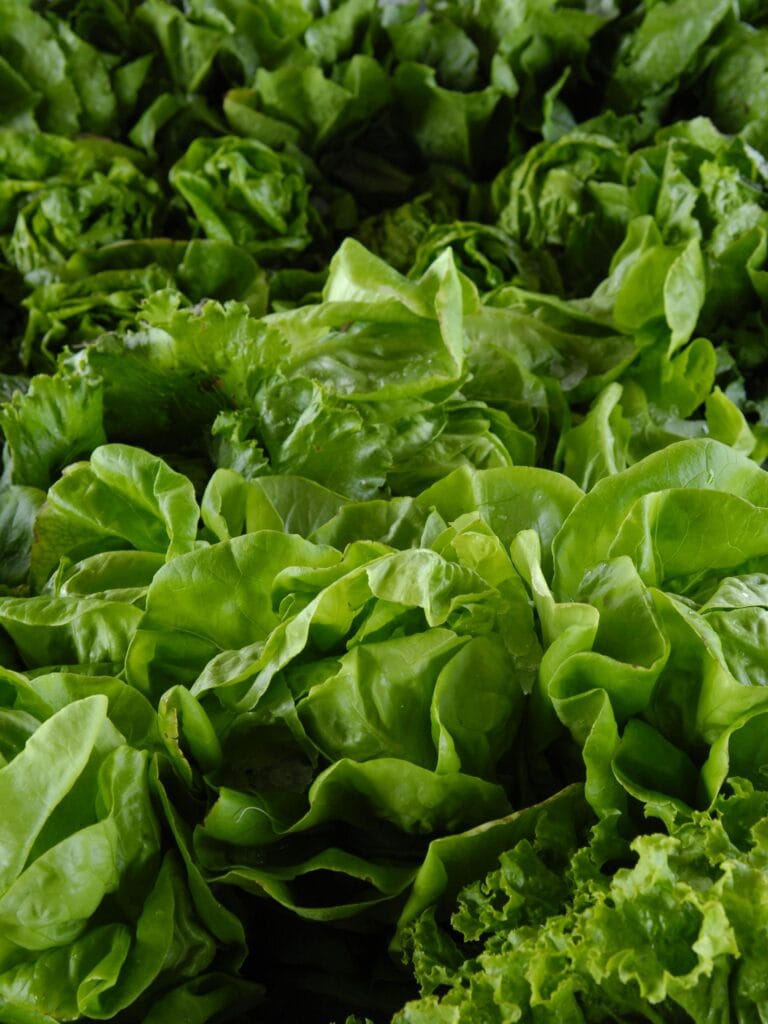
2. Butterhead Lettuce
Butterhead varieties are known for their soft, juicy leaves. They don’t take up too much space, making them another good container option. You can try these seeds, “Buttercrunch (Bibb).”

3. Romaine Lettuce
Romaine is slightly more structured than loose-leaf, with upright leaves and a bit more crunch. It takes a little longer to grow, but it’s worth the wait for its sturdy texture. I have tried these seeds “Little Gem” with tender, sweet leaves and “Parris Island” with tall, dark green leaves and crunchy ribs.

4. Baby Lettuce Mixes (Mesclun)
These mixes combine multiple varieties, so you get a blend of colors and flavors. They’re often sold as “baby greens” and are perfect for those who want a little variety.
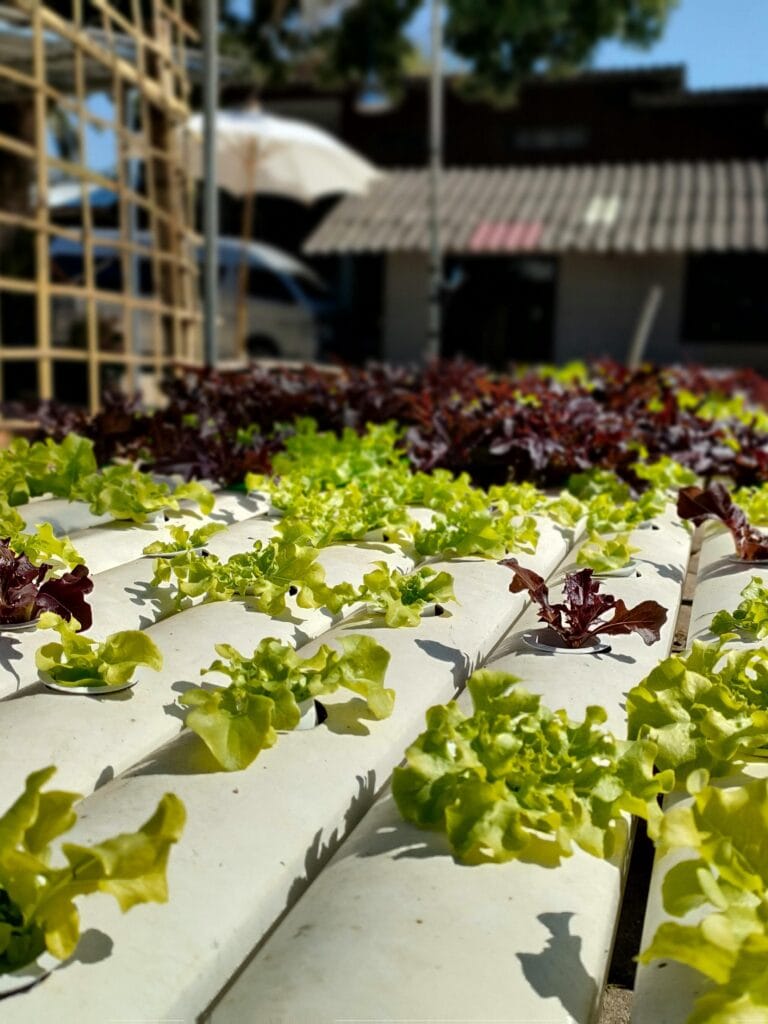
5. Iceberg Lettuce
Iceberg, also known as crisphead, is known for its crunchy texture and mild flavor. It grows in tight, round heads with pale green leaves and is very popular in salads.

Icebergs are a bit more challenging to grow than other types, as they need cooler temperatures and more space to form those dense heads. I prefer to grow “Great Lakes” and “Summertime”, as these seeds are more tolerant of heat, and sometimes “Igloo” that’s great for containers since it doesn’t take up as much space as traditional iceberg types.
Choosing the Right Container
The right container makes a big difference for growing healthy lettuce. Lettuces don’t need a large pot to grow, because the plant has a shallow root system. Here’s what to keep in mind.
Also, find out how deep should a raised bed garden be!

- Size and Depth
As I mentioned lettuce has shallow roots so it doesn’t require a very deep container. A depth of 8 inches (20 cm) is usually enough. In containers that are 12 to 18 inches (30-45 cm) wide can grow several heads of lettuce or a mix of loose-leaf varieties.
2. Drainage
Good drainage is important. Make sure your container has drainage holes to prevent water from pooling at the bottom, which can cause root rot. If you’re using a pot without drainage, consider drilling holes or adding a layer of pebbles to help water escape.
3. Material
I’ve found that terracotta pots are breathable and help with moisture control, though they may dry out faster than plastic. Plastic or ceramic pots are more lightweight and retain moisture well. For best results, select a natural material container that doesn’t contain chemicals that could seep into the soil.
Choose whatever works best for your space and maintenance preferences. In my experience, these types of containers work best for container gardening:
- terracotta pots
- wooden planters
- fabric grow bags
Soil Preparation
The best soil for growing lettuce is rich in organic matter, well-draining, and retains moisture. Here’s how to create the perfect growing environment.
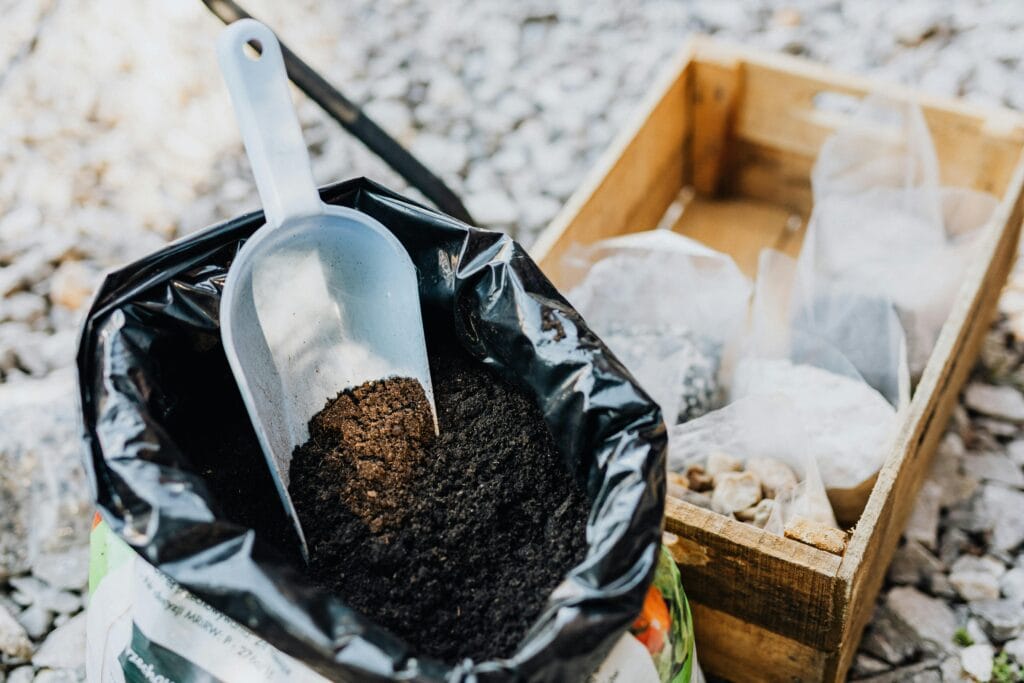
- Soil Mix
Use a high-quality potting soil mix, preferably one that’s labeled as well-draining or special for containers. Avoid garden soil, which can compact in containers and make it difficult for roots to spread.
2. Add Organic Matter
You can grow your lettuce with potting soil only, but for a stronger start, I recommend to try mixing in some compost. Compost is like gold for lettuce Mixing a few inches of rich compost into the top layer of the soil gives your lettuce the nitrogen it needs and saves on fertilizer costs. Compost gives the soil a nutrient boost and improves drainage, helping lettuce grow lush and green. Think of compost as your garden’s multi-vitamin!
Bonus: Top 5 Home Compost Machines – Most Popular Ones
3. pH Level
Lettuce prefers slightly acidic to neutral soil, with a pH between 6.0 and 7.0. Most potting mixes are already within this range, but if you’re repurposing soil, a pH test kit can help you check.
Planting Your Lettuce: Seeds or Transplants?
You can grow lettuce from seeds or buy transplants from a greenhouse. I usually start with seeds because they’re inexpensive and let me try different varieties in one container.
Choose seeds from companies that focus on heirloom, organic, and non-GMO options. Local, responsibly grown seeds are an even better choice if available!
Recently, many imported seeds have had low germination rates, sprouting only one or two seeds at a time.
The best solution is to save seeds from your plants to ensure pure and reliable production.
Planting from Seeds
- Depth
Plant seeds about 1/4 inch deep. They are tiny and delicate so don’t plant lettuce seeds too deep. A simple way to plant is to sprinkle the tiny lettuce seeds on top of the soil and water well. I recommend just atomizing them and covering them with a light layer of potting soil.
2. Spacing
Plant the seeds close together for baby greens. If you want full heads of lettuce, space the seeds or seedlings 4 to 6 inches apart.
3. Watering
Keep the soil moist but not waterlogged. A gentle misting daily is usually enough, especially in warm weather.
Planting Using Transplants

- Depth
Place the lettuce transplants at the same depth they were growing in their nursery pot. The top of the root ball should be level with the soil surface.
2. Spacing
For baby greens, space the plants about 2-4 inches apart. For full heads of lettuce, space them 4-6 inches apart to allow for proper growth.
3. Watering
Water well after planting to help them settle in, then maintain even moisture. Water regularly, especially during dry periods, to keep the plants hydrated.
Sunlight and Temperature
- Sunlight Needs
Lettuce loves cool weather and doesn’t do well in extreme heat, but some types can’t handle much heat. They should get 4 to 6 hours of sunlight daily.
If you live in a hot climate, place containers where they get morning sun and some shade in the afternoon, as the afternoon sun can be too strong and dry it out.
If the leaves look wilted, consider providing more shade. The advantage of container planting is that it’s easy to move them to a better spot if needed. During summer, I often move my pots to a shaded part of the balcony to keep them cooler.
2. Temperature
Lettuce prefers temperatures between 45 °F and 75 °F, so that means the best times for growing them are in the spring and autumn months. If you’ve been wondering, “Why is my garden lettuce bitter?” warmer weather might be the cause.
In hotter temperatures, lettuce often begins to flower, a process called bolting, which can lead to a bitter taste in the leaves. If temperatures rise, consider using a shade cloth or moving your containers indoors near a sunny window to keep them cool.
Watering
Container-grown lettuce needs consistently moist soil, but too much water can lead to root rot. Also, lettuce plants can develop fungal and bacterial rot due to their crowded leaves, especially if the soil is too wet.
Check the soil often and make sure it doesn’t dry out completely. Not enough water can cause seedlings to fail or seeds not to sprout.
- Watering Frequency
Lettuce is over 80 percent water. Water every few days, depending on the weather. Check the top inch of soil – if it feels dry, it’s time to water.
2. Misting for Humidity
On hot days, mist the leaves lightly to keep them cool.
3. Avoid Overwatering
Watch for yellowing leaves, a sign you may be watering too much.
Fertilizing
Lettuce is a relatively light feeder, but it still appreciates a boost of nutrients.
- Start with a Balanced Fertilizer
Use a balanced, slow-release fertilizer or a liquid fertilizer every few weeks to support steady growth.
2. Organic Options
I prefer organic fish water, compost tea, coffee, or banana water which provides a mild nutrient boost without overwhelming the plants.
Harvesting Your Lettuce
One of the joys of growing lettuce is that you can start harvesting early. After you harvest some greens, sprinkle seeds in the same spot. I do this every time so I always have fresh lettuce ready to pick.
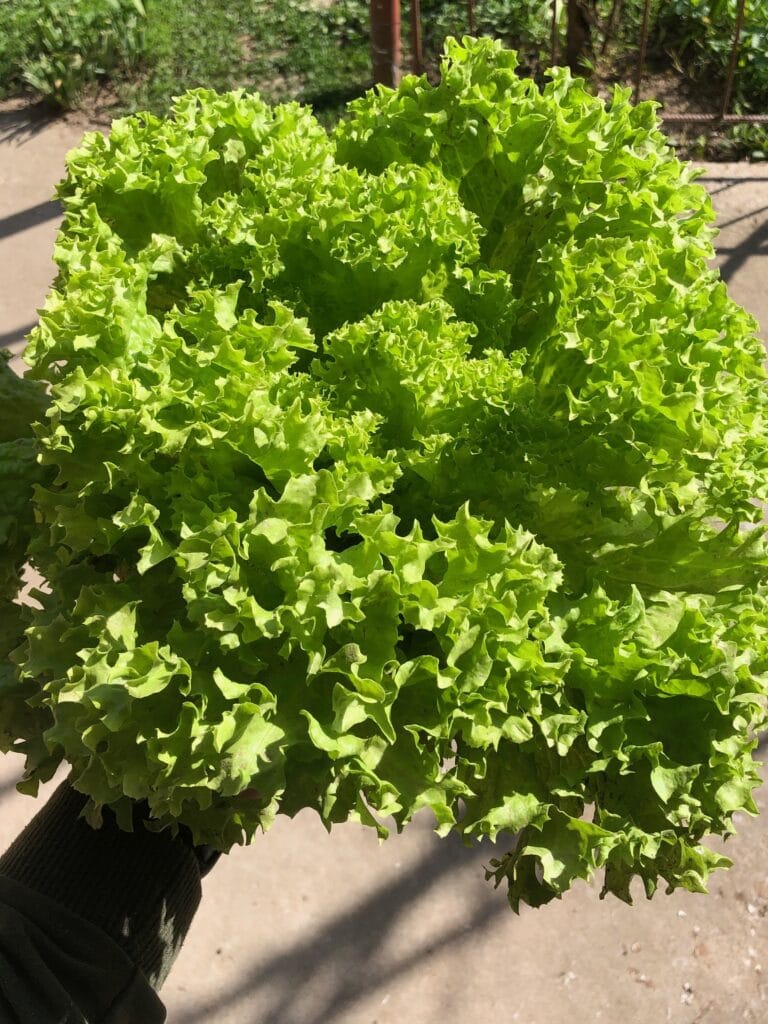
- Cut-and-Come-Again Harvesting
The best part about these plants is that you can harvest them throughout the season. Using the cut-and-come-again method, you can usually harvest two or three times from one plant. Snip outer leaves as they reach about 4-6 inches.
Leave the center of the plant intact, and it will continue to produce more leaves. This method also works for heading varieties if you only need a few leaves!
2. Baby Greens
Cut the leaves about 1 inch above the soil level for a mix of baby greens, and they will regrow.
3. Harvesting Full Heads
Wait until the heads are mature and plump for the best flavor. This usually takes about 70-80 days. To harvest, cut the head off right at the soil level, and you’ll have a beautiful head of lettuce!
Tip: Harvest in the morning when the leaves are crispest and retain the most moisture.
Bonus: To learn more about effective methods for preserving lettuce from your garden, refer to our comprehensive guide, “How to Preserve Lettuce from the Garden.“
Common Pests and How to Handle Them
Container-grown lettuce is less prone to pests than garden-grown, but it’s not entirely immune. Here are a few common pests and what you can do about them:
- Slugs and Snails
These animals can munch big holes in lettuce leaves, especially in damp conditions.
Read more about how to get rid of snails in the garden.

2. Aphids
These tiny green or black bugs cluster on the underside of leaves and suck the plant’s juices, causing leaves to curl and weaken.

3. Leaf Miners
Leaf miners are tiny larvae that burrow inside leaves, creating squiggly white lines. If you see small tunnels in the leaves, it’s likely a leaf miner.
They don’t usually kill lettuce but can make leaves look unattractive.

4. Flea Beetles
Flea beetles are tiny, jumping insects that leave small, round holes in lettuce leaves. They’re more common in early spring.
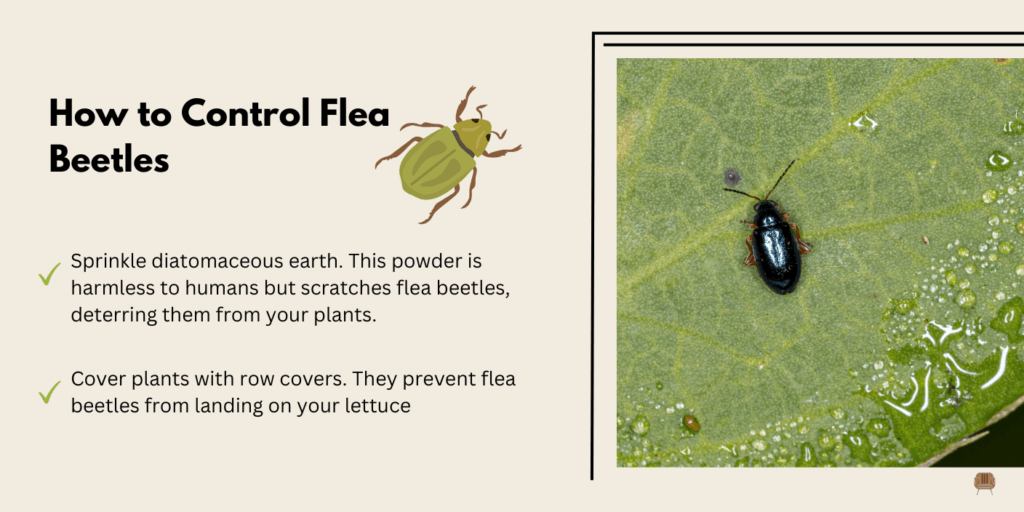
Natural Fertilizers to Feed Your Lettuce
If you want healthy lettuce, natural feeding goes a long way. Lettuce doesn’t need heavy feeding, but it does appreciate some organic nutrition to keep those leaves growing lush and green.
Using natural fertilizers is an effective way to keep your lettuce flourishing without harsh chemicals. Your lettuce will reward you with fresh, crisp leaves, and you’ll enjoy knowing you grew it all naturally. Enjoy your harvest!
Here are some of my favorite natural fertilizers that are gentle, effective, and easy to use.
- Brew Some Compost Tea
If you’ve never tried compost tea, it’s a game-changer. This nutrient-rich “tea” is easy to make and gives plants a quick, gentle boost. Plus, it’s absorbed fast, so your lettuce gets nutrients quickly.
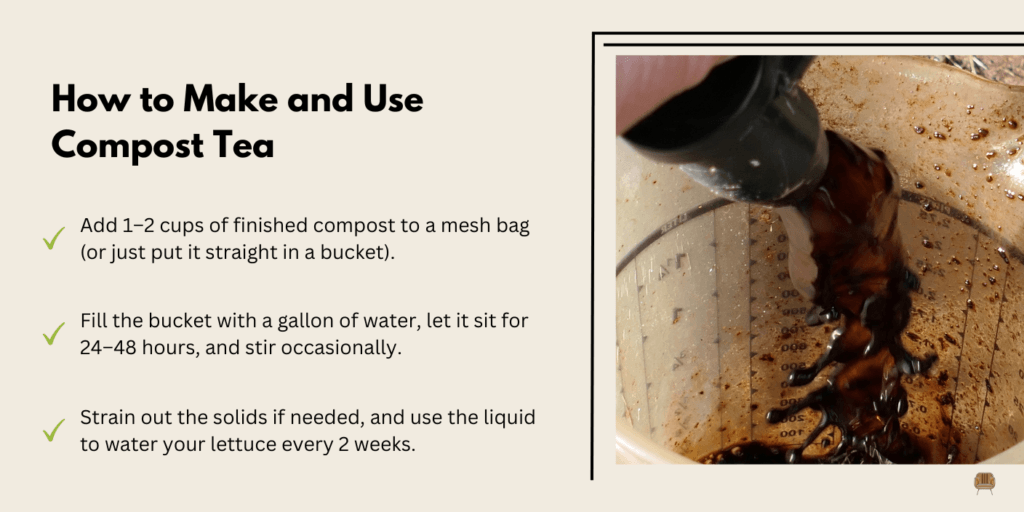
2. Worm Castings for Steady Nutrition
They’re nutrient-dense, packed with beneficial microbes, and they won’t burn plants. Plus, they help soil retain moisture, which is perfect for container-grown lettuce.
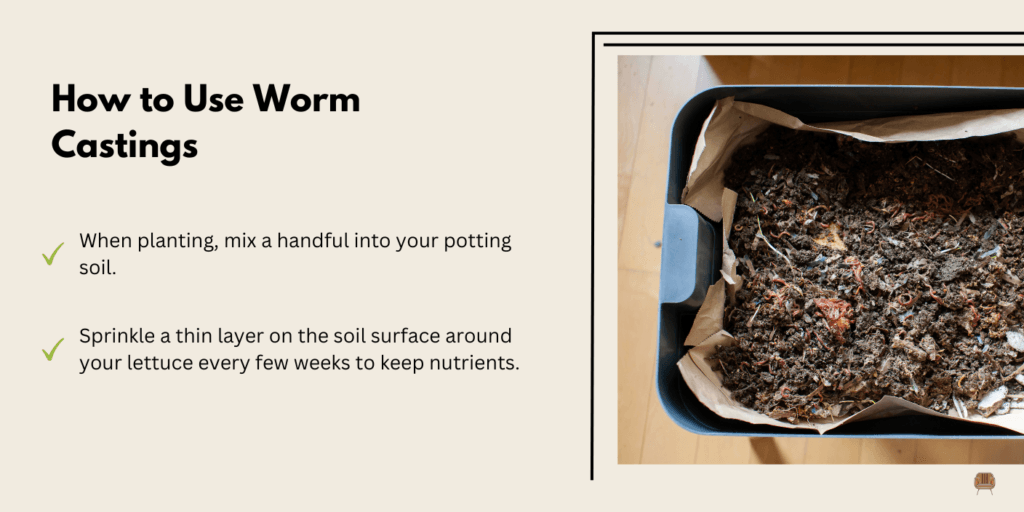
3. Fish Water or Emulsion for a Fast Nitrogen Boost
Fish water does not smell amazing, but your lettuce will love it! High in nitrogen, fish water encourages leafy growth, making it perfect for lettuce.
It’s also fast-acting, which makes it great when your plants need a little extra love.
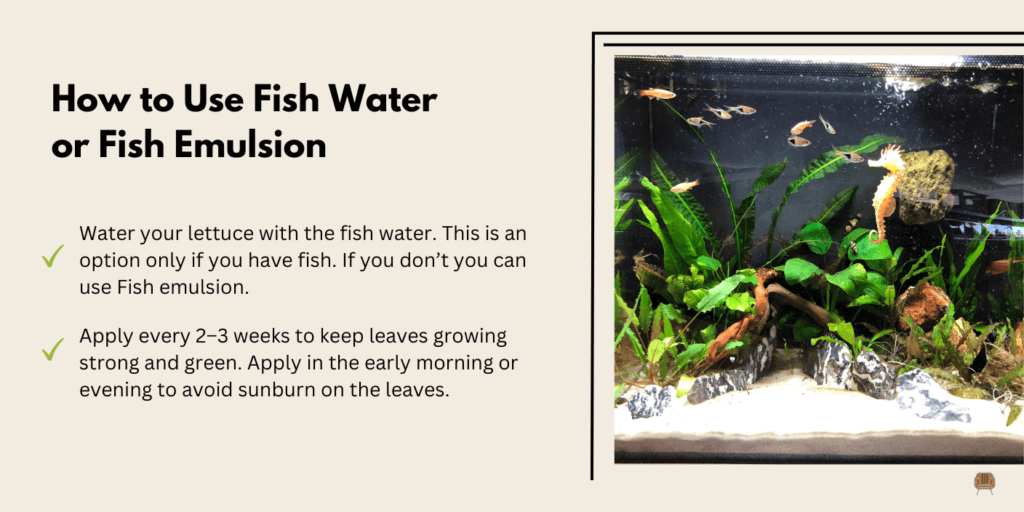
4. Coffee Grounds for a Nitrogen Boost
If you drink coffee, you’ve got an instant fertilizer at your fingertips! Coffee grounds add nitrogen and can help improve soil structure, but use them sparingly – too much can make the soil acidic over time.

5. Banana Peels a Try for Potassium
Banana peels are one of my go-to natural fertilizers. They are an easy, natural source of potassium, which helps plants grow strong and resist disease. If you’re eating bananas, save those peels for your lettuce!

6. Crushed Eggshells for a Little Calcium
Eggshells break down slowly, but they provide calcium, which helps prevent tip burn (brown edges on leaves) in lettuce. It’s not essential, but eggshells can add some extra goodness to the soil.


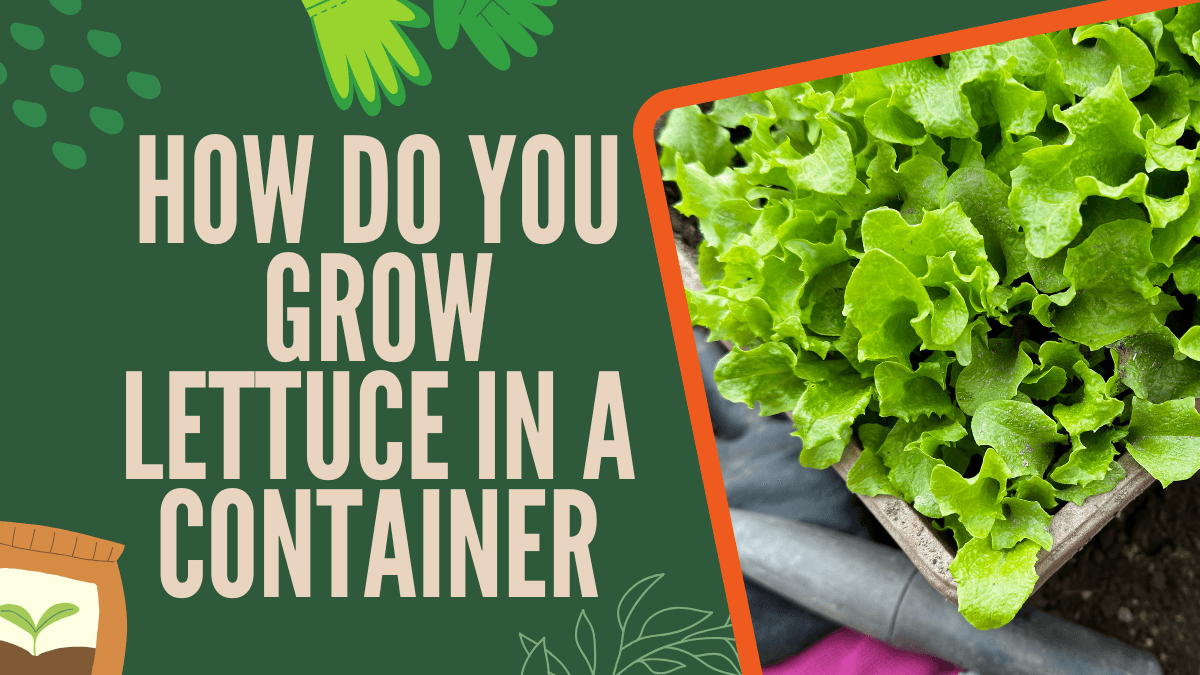
 ChatGPT
ChatGPT
 Perplexity
Perplexity
 Claude
Claude
Leave a Reply